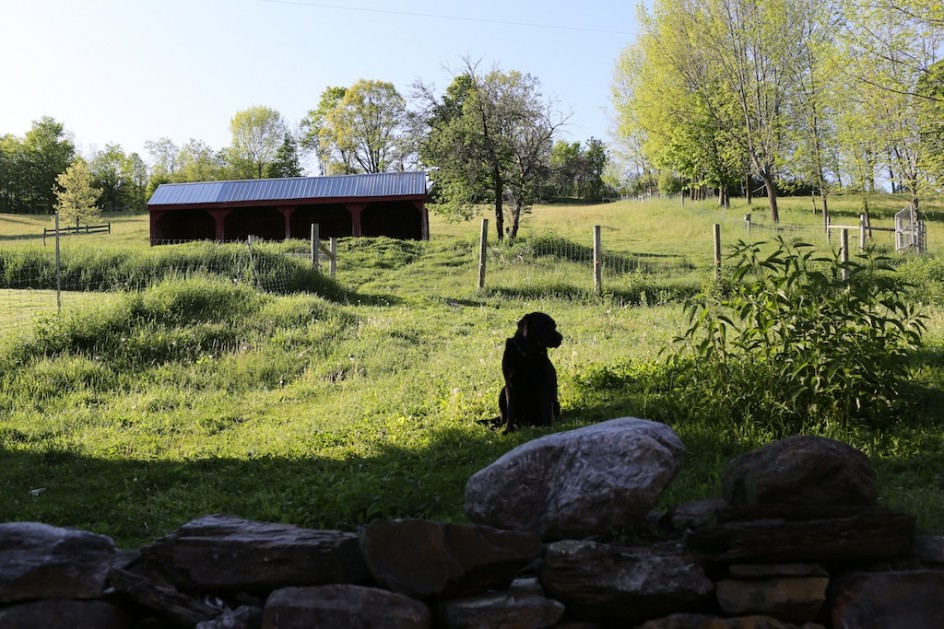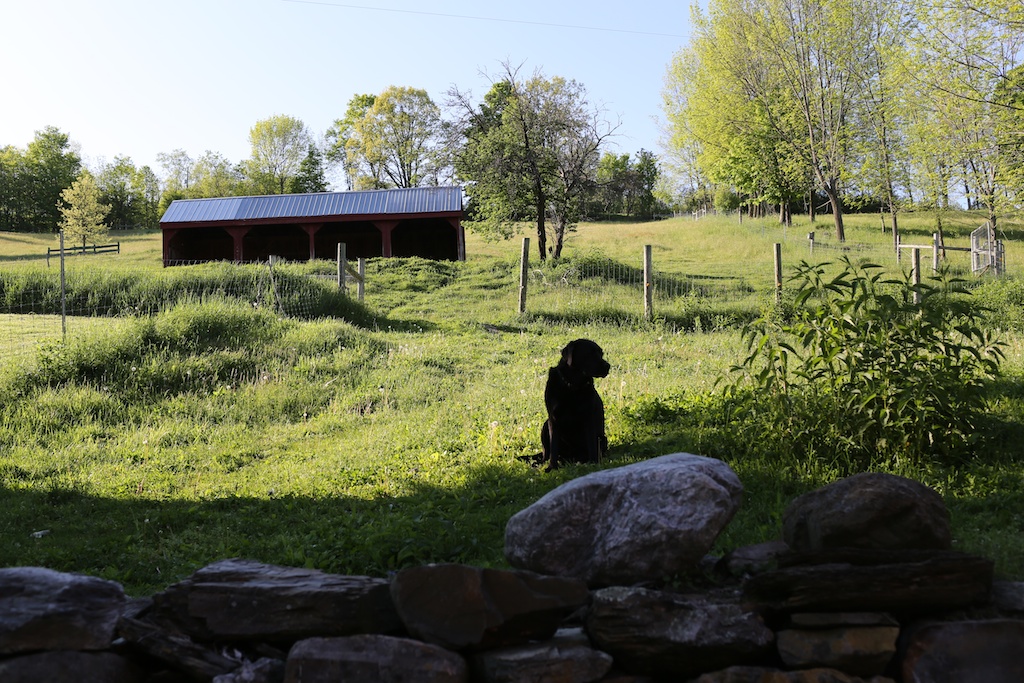
For the past 10 years, I’ve been living with animals, writing and thinking and studying the ways in which I believe we communicate with them, and them with us. People have their own ideas about this, as with everything else dealing with animals, but from time to time, I like to put my own thoughts and feelings down. I do not know if my ideas are true or not, they are just my ideas, and I am coming to believe some things more certainly than others.
I am planning to incorporate some of these observations and thoughts in the book about Simon that I will begin working on shortly. I tested – lived every day – some of these ideas out on the donkeys, most often, the dogs. But also on barn cats, sheep and chickens.
The most important words I know are those the most rarely heard in discussions about animals: I don’t know.
– I remind myself almost every day that I do not know what my animals are thinking. I try and guard myself against ever believing that I know for sure what is in their minds. I probably never will. We do not yet have a language for animals and because we are such an arrogant species, we assume they think in our words and feel our emotions. In my experience, the more people think they know what is in an animal’s head, the less they do know, because they simply project their own feelings and words and receive them back as reality. For me understanding animals is mostly about listening and watching. The more I listen, the less I know, the more I see I need to learn.
– I believe that food is the centerpiece of connection with domestic animals like dogs, cats, donkeys, chickens. Sheep, too. It is the cornerstone, the building block of communications. Food is life for animals, particularly those that depend on us for it. It is the beginning of our conversations with them. Animals want and need more than that from us, much more, but food is the universal pathway, I think, to getting them to focus on us and pay attention to us.
– More and more, I believe that I see animals communicating with us through emotions. Feelings, instincts and emotions are their language, along with ritual behavior and body language. I have learned to watch my dogs head tilts, tail position and eyes. They speak to me all the time. I see emotions in donkeys, dogs and cats. I see affection, arousal, confusion, uncertainty and curiosity, all expressed in their own language, their own kind of consciousness. Not ours. It is beyond me. I don’t know it. They sense what we feel, and they share their feelings insofar as they can.
– I have come to see that animals need attention, from tactile to voice to physical contact. I sing to the animals all the time, and they respond to it. So does Maria. Sounds, not words, are important to them. Like dogs, donkeys often show emotion simply by their presence, by being around us, standing next to us, leaning into us. Dogs have learned to mirror human desires like excitement and arousal and affection – they see that this is how they get fed and tended to, get shelter and access to the outside world. Donkeys love to be groomed, as dogs do when it is done early and regularly. Animals like to be touched, rubbed, scratched, brushed. It is a way of communicating with them.
– I do not believe animals grieve. I believe they are often disoriented and anxious when other animals die, and humans are quick to project human ideas of grief. But animals do not have language or words, and are not believed to understand a concept like death, let alone mourn in the human way. Some animals – geese, elephants, monkeys – seek lost mates, sometimes for months or years, and that is seen as human style grieving. I have never seen an animal in my life grieve, and I have lost dogs, sheep, donkeys, cows, cats and chickens. I just don’t believe it. It is what we need, not what they need. No researcher ever got a grant by finding that animals are simple or do not grieve. It is not what animal lovers want and need to hear.
– I am learning to communicate with animals by showing them my emotions. Simon has opened me up more than any other animals, and I communicate the most intensely with him. Mostly, just by standing next to one another. By listening carefully to their movements, their snorts, tail flips, watching their eyes, their body language. I see Maria and animals talking all the time. Her emotions are close to the surface, they smell and sense them. She has a dialogue with the donkeys one can almost touch. I have a similar interaction with dogs. I have had success in closing my eyes and thinking thoughts, and seeing my dogs intuit my meaning and respond. Sometimes, I am so in sync with my dogs that I can get up, go for a walk in the woods and return and never speak. It is a powerful experience.
These are just a few of the thoughts evolving for me, and I am happy to share them. I do not argue or defend these ideas, nor do I need anyone to agree with them. We each get where we are going in our own way, and your ideas are as good as mine, perhaps better. Animals teach me that they listen far better than humans do. They are the world’s most active listeners. And their communications are complex, mysterious and clear. Their communications are so far beyond me it is profoundly humbling.

